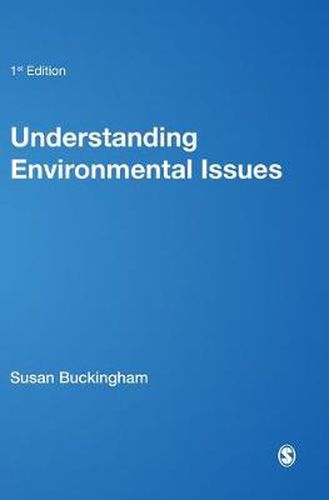Readings Newsletter
Become a Readings Member to make your shopping experience even easier.
Sign in or sign up for free!
You’re not far away from qualifying for FREE standard shipping within Australia
You’ve qualified for FREE standard shipping within Australia
The cart is loading…






There is now an unprecedented interest in, and concern about, environmental problems. Understanding Environmental Issues explains the science behind these problems, as well as the economic, political, social, and cultural factors which produce and reproduce them. Understanding Environmental Issues explains, clearly and concisely, the science and social science necessary to understand environmental issues - using learning outcomes, text boxes, tables and figures throughout to make complex ideas accessible and relevant. It describes - in section one - the philosophies, values, politics, and technologies which contribute to the production of environmental issues. It uses cases - on climate change, waste, food, and natural hazards - in section two - to provide detailed illustration and exemplification of the ideas described in section one. The conclusion, a case study of Mexico City, draws together the key themes Vivid, accessible and pedagogically informed, Understanding Environmental Issues will be a key resource for undergraduate and taught postgraduate students in Geography, Environment, and Ecology; as well as students of the social sciences with an interest in environmental issues.
$9.00 standard shipping within Australia
FREE standard shipping within Australia for orders over $100.00
Express & International shipping calculated at checkout
There is now an unprecedented interest in, and concern about, environmental problems. Understanding Environmental Issues explains the science behind these problems, as well as the economic, political, social, and cultural factors which produce and reproduce them. Understanding Environmental Issues explains, clearly and concisely, the science and social science necessary to understand environmental issues - using learning outcomes, text boxes, tables and figures throughout to make complex ideas accessible and relevant. It describes - in section one - the philosophies, values, politics, and technologies which contribute to the production of environmental issues. It uses cases - on climate change, waste, food, and natural hazards - in section two - to provide detailed illustration and exemplification of the ideas described in section one. The conclusion, a case study of Mexico City, draws together the key themes Vivid, accessible and pedagogically informed, Understanding Environmental Issues will be a key resource for undergraduate and taught postgraduate students in Geography, Environment, and Ecology; as well as students of the social sciences with an interest in environmental issues.